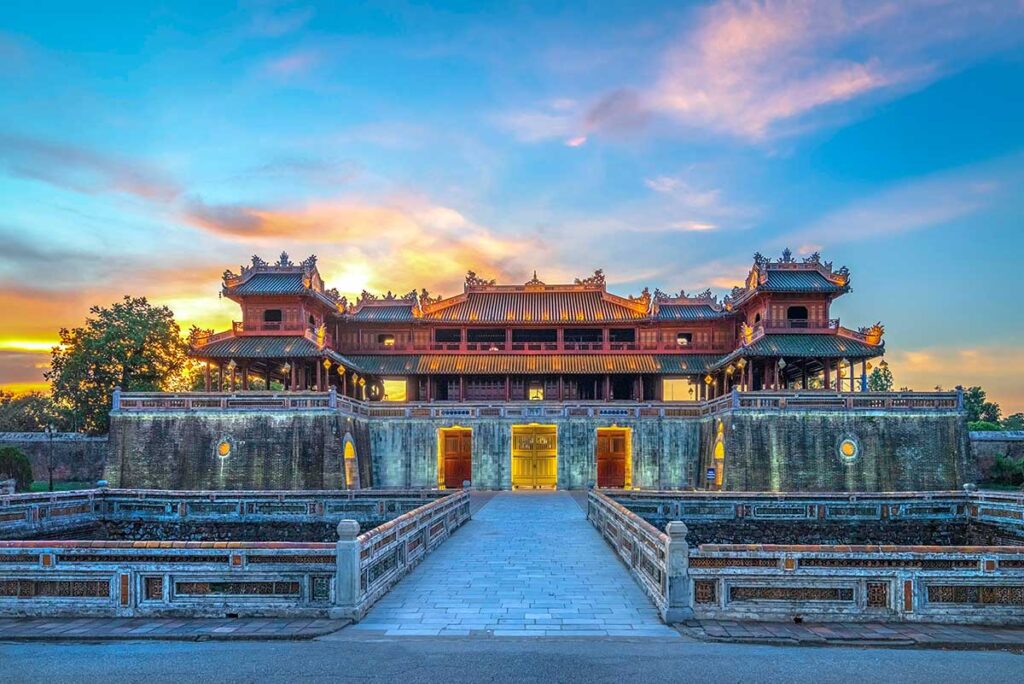What is Tu Duc Tomb?
The Tomb of Tu Duc is one of several royal mausoleums located near Hue, the former imperial capital of Vietnam. It was built for Emperor Tu Duc of the Nguyen Dynasty and is known for its peaceful setting, surrounded by pine trees, lotus ponds, and pavilions. Like other tombs in Hue, the Mausoleum of Tu Duc reflects the emperor’s personality and was part of a larger royal tradition of building elaborate resting places outside the city.
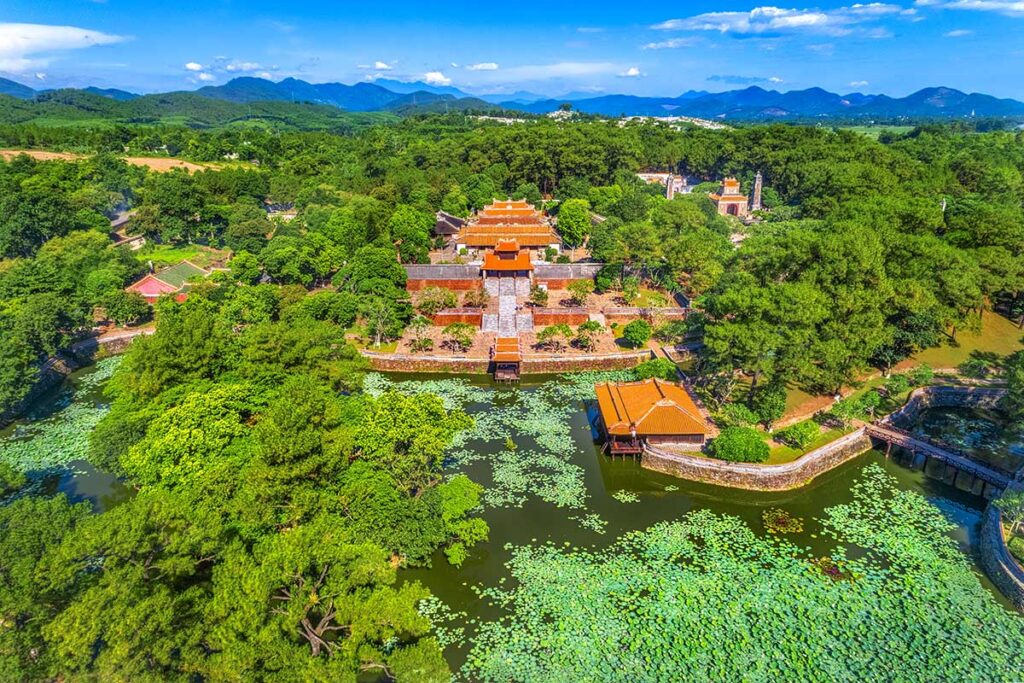
Who was emperor Tu Duc?
Emperor Tu Duc (1829–1883) was the fourth emperor of the Nguyen Dynasty and its longest-reigning ruler, holding the throne for 36 years. He was a deeply educated and introspective man, known for his love of poetry, literature, and philosophy. Tu Duc ruled during a period of internal unrest and increasing pressure from French colonial forces. Although he fiercely opposed foreign influence and tried to maintain Vietnam’s independence, his government struggled to modernize and eventually signed treaties that gave France a foothold in the country.
On a personal level, Tu Duc led a life of contradiction. He built luxurious retreats and surrounded himself with art and quiet beauty, yet remained burdened by illness and the inability to have children, which left a political vacuum after his death. Despite his conservative policies, he remains a fascinating historical figure—both a poet-emperor and a symbol of a fading imperial era. His complex personality and inner world are strongly reflected in the place he designed for his own retreat and final rest.
History of Tu Duc Tomb
The Mausoleum of Emperor Tu Duc was constructed between 1864 and 1867, during the emperor’s lifetime—a rare case among Hue’s imperial tombs. Tu Duc personally selected the location in a pine forest near a lotus-filled lake, seeking a quiet place to retreat from the pressures of ruling and worsening colonial tensions. He didn’t just plan the tomb as a final resting place, but as a kind of living palace, where he could write poetry, rest, and enjoy nature while still alive.
The tomb complex was originally called Khiem Cung, and Tu Duc frequently stayed there for extended periods. After his death in 1883, it was renamed Khiem Lang and officially became his mausoleum. Interestingly, although the emperor is associated with the tomb, his actual burial location remains unknown—possibly to prevent grave robbing, a common concern at the time. Some believe he was buried elsewhere in secret by loyal servants who were later executed to protect the location.
This combination of personal retreat, political anxiety, and hidden burial contributes to the mystique and emotional weight of the tomb of Tu Duc today.
Highlights & architecture
The tomb of Tu Duc is one of the most expansive and detailed royal tombs in Hue. More than just a burial site, it was designed as a living space where the emperor could retreat and reflect. Set among pine trees, lotus ponds, and stone paths, the site feels more like a peaceful garden estate than a formal tomb. Here are the key highlights to look for during your visit:
1. Luu Khiem Lake
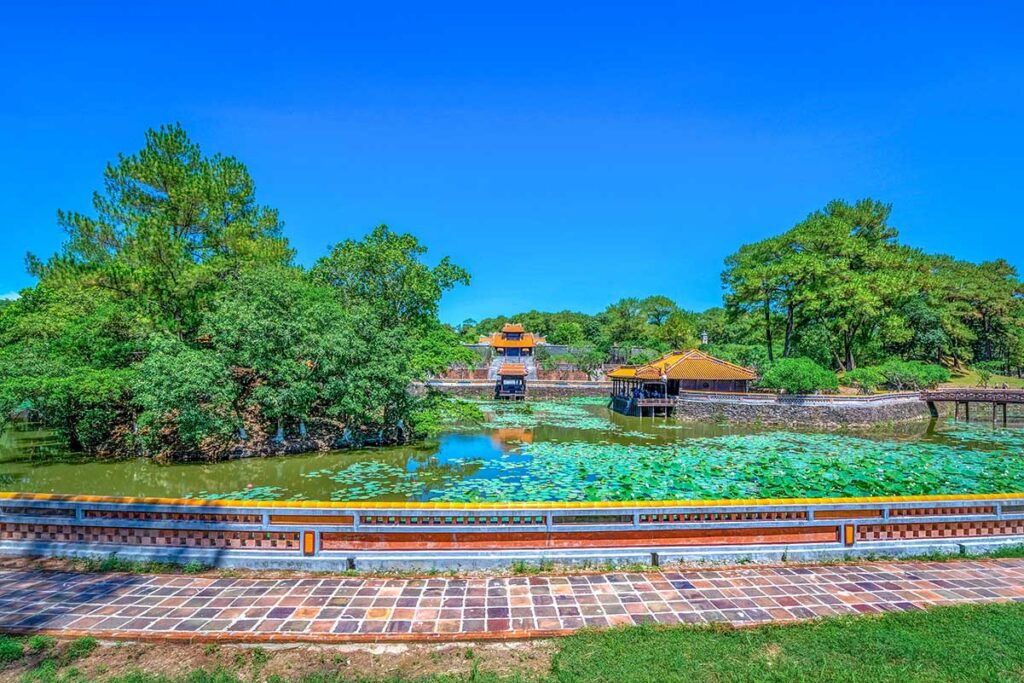
This tranquil lake is one of the first things you’ll see upon entering the complex. Surrounded by pine trees and lotus flowers, it gives the area a park-like atmosphere. You can walk along its banks or cross over the wooden bridges that connect small islets. It sets a calm tone for the rest of your visit and reflects the emperor’s love for nature.
2. Xung Khiem Pavilion
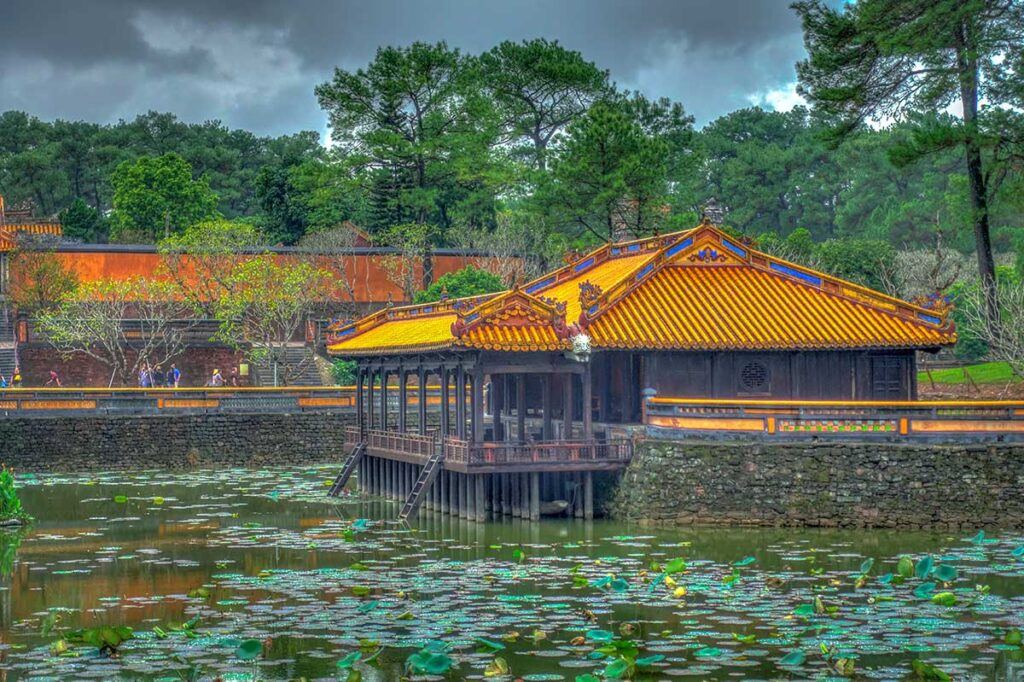
Located on the edge of the lake, this simple but elegant wooden pavilion was where Tu Duc would sit to write poetry and enjoy the scenery. It’s open on all sides, offering views across the water, and is a great place to take a break. The structure is small but meaningful—this is where the emperor came for peace of mind.
3. Du Khiem Pavilion and Dock
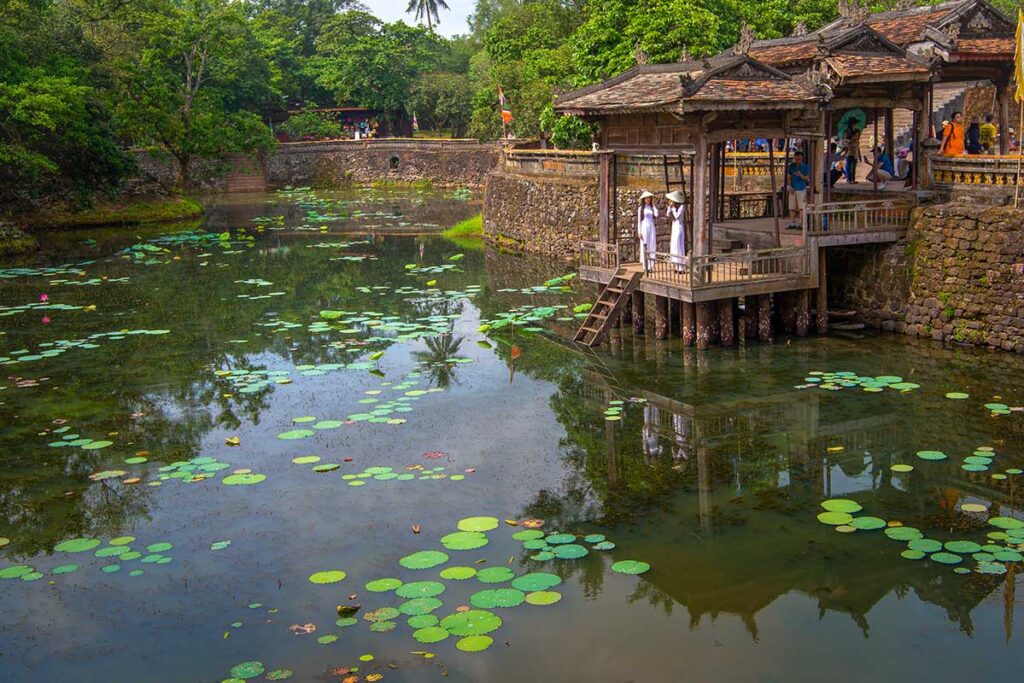
This was the former landing area for the emperor’s boat when arriving at the tomb by water. The dock and attached pavilion are built in classic Vietnamese style, with wooden beams and tiled roofs. It gives you a sense of how Tu Duc used the site as a true retreat, arriving quietly and privately by boat from the Perfume River.
4. Stele Pavilion (Bi Dinh)
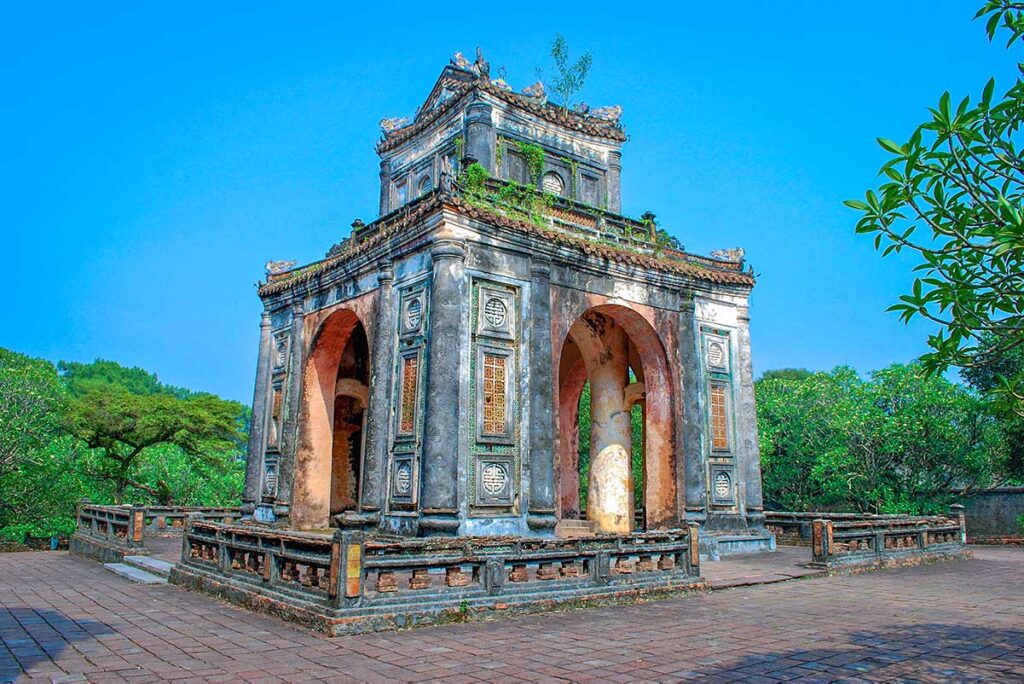
This pavilion houses a large stone stele inscribed with Tu Duc’s own epitaph—unusual because most emperors had theirs written by their successors. He openly acknowledged the challenges of his reign and the regrets he carried. The pavilion itself is roofed in traditional tiles and sits on a raised platform, marking one of the most personal moments in the entire complex.
5. Hoa Khiem Temple

This is the main ceremonial structure where the emperor and his empress were worshipped. It resembles a small palace more than a temple, with red columns, wooden beams, and beautifully detailed decorations. Today, it functions like a museum, and visitors can view personal items used by the emperor, including his throne and other royal artifacts.
6. Luu Khiem and Phap Khiem Tombs
These two smaller tombs belong to Tu Duc’s concubines and are tucked away in a quiet part of the grounds. Though not heavily decorated, they reflect the broader royal world that surrounded the emperor during his life. Their presence also adds to the sense that this was once a functioning residence, not just a memorial.
7. The Burial Site (Buu Thanh)
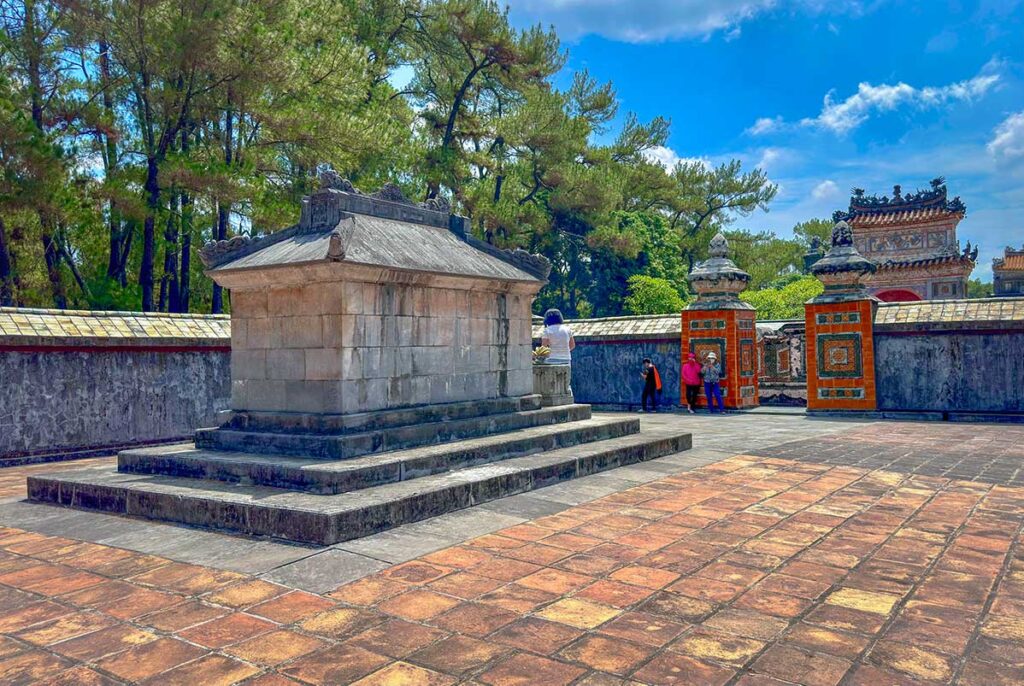
At the far end of the complex lies the official tomb area, surrounded by a stone wall known as Buu Thanh. There’s a sense of mystery here—Tu Duc may not actually be buried at this spot, and no one knows for sure where his real resting place is. Still, the design is elegant, with a small hill, stone balustrades, and a solemn, peaceful setting.
Visiting information & Practical tips
Location
The Mausoleum of Emperor Tu Duc is located at 17/69 Le Ngo Cat Street, Thuy Xuan Ward, Hue City, approximately 6 to 8 kilometers southwest of Hue’s city center. Nestled in a serene pine forest, the tomb offers a peaceful retreat from the bustling city, making it a convenient destination for a half-day excursion.
Entrance fee
As of 2025, the entrance fees are as follows:
- Adults: 150,000 VND
- Children (7–12 years old): 30,000 VND
- Children under 7: Free
For those planning to visit multiple sites, combo tickets are available:
- Tu Duc Tomb + Dong Khanh Tomb: 200,000 VND (adults), 30,000 VND (children)
- Imperial City + Tu Duc Tomb + Khai Dinh Tomb: 420,000 VND (adults), 80,000 VND (children)
- Imperial City + Tu Duc Tomb + Minh Mang Tomb + Khai Dinh Tomb: 530,000 VND (adults), 100,000 VND (children)
These combo tickets are valid for two consecutive days.
Opening times
The Mausoleum of Tu Duc is open daily from 7:00 AM to 5:30 PM. It’s advisable to arrive at least an hour before closing to fully appreciate the site without feeling rushed.
Dress code
While there is no strict dress code enforced, visitors are encouraged to dress modestly out of respect for the cultural and historical significance of the site. It’s recommended to wear clothing that covers the shoulders and knees. Comfortable walking shoes, sun protection (hat, sunscreen), and water are also advisable, especially during warmer months.
Guides
Exploring the Mausoleum of Tu Duc without a guide is entirely feasible; however, interpretive signage on-site is limited. Hiring a local guide can enrich your visit by providing historical context and insights into the emperor’s life and the tomb’s architecture. Guide services are available at the entrance or can be arranged through local tour operators.
Nearby sights
Enhance your visit by exploring these nearby attractions:
- Thuy Xuan Incense-Making Village: Located en route to the tomb, this vibrant village is renowned for its traditional incense production. Visitors can observe the crafting process and purchase handmade incense sticks.
- Mausoleum of Emperor Thieu Tri: Situated close to Tu Duc’s tomb, this lesser-visited site offers a tranquil setting and provides insight into the Nguyen Dynasty’s architectural styles.
- Mausoleum of Emperor Khai Dinh: Approximately 10 kilometers from Hue’s center, this tomb is notable for its unique blend of Vietnamese and European architectural elements, featuring elaborate mosaics and a hillside setting.
How to get to the Tomb of Tu Duc?
Taxi or grab app
One of the easiest ways to get to the Mausoleum of Tu Duc is by taxi or the Grab app. The ride from the city center takes about 15–20 minutes and usually costs between 150,000 and 200,000 VND. Grab works just like Uber—you can order a car or motorbike through the app, and the price is shown upfront.
GrabBike is a good budget option if you’re traveling solo, while GrabCar offers more comfort. It’s a good idea to ask the driver to wait during your visit, since the tomb area isn’t always busy and it might be hard to find another ride back.
Cycling or scooter
If you’re up for a bit more adventure, cycling or renting a scooter gives you more freedom.
The distance from Hue’s center is manageable, and the road to the tomb is flat and relatively quiet. A bicycle is a slow and scenic way to go—just make sure to bring water and sun protection. A scooter is faster and lets you combine your visit with nearby sights like Thuy Xuan incense village or Dong Khanh Tomb. Scooter rental shops are common in Hue, and 50cc models are available even without a local license.
Tour
The tomb of Tu Duc is one of the most popular sites in Hue and is included in many group tours that also visit places like the Imperial City, Thien Mu Pagoda, and other royal tombs. Group tours are a good way to see several highlights in one day, often with a short dragon boat ride included.
If you prefer a more personal experience, you can also book a private tour, which gives you full control over the itinerary. This is a good option if you want to spend more time at Tu Duc Tomb or add lesser-visited spots like Dong Khanh or Thieu Tri.
Hue Historical City Tour By Small Group or Private Tour
- Includes: Hue Imperial City, royal tombs, and a scenic dragon boat ride.
- Flexibility: Private option lets you customize the itinerary to your interests.
More historical sights in Hue
Besides the Mausoleum of Tu Duc, Hue is full of important historical sites from the time of the Nguyen Dynasty, which ruled Vietnam from 1802 to 1945. The city was once the imperial capital, and many emperors left behind elaborate tombs, temples, and royal structures. If you’re interested in history, architecture, or Vietnamese culture, there’s a lot more to explore nearby.
- Hue Imperial City – A massive walled citadel in the center of Hue, once the home of the Nguyen emperors. You can walk through grand gates, palaces, temples, and halls that have been partly restored after wartime damage.
- Mausoleum of Emperor Gia Long – Located in a quiet, forested area far from the crowds. This is the most remote of all the tombs, belonging to the dynasty’s founder. It’s less visited, but worth it for the peaceful setting and historic value.
- Tomb of Minh Mang – Known for its perfect symmetry and natural surroundings. The layout is based on Confucian design principles and reflects the emperor’s strong character and vision for a unified Vietnam.
- Mausoleum of Emperor Khai Dinh – A dramatic mix of Vietnamese and French-influenced architecture. It’s built into a hillside and decorated with colorful glass and ceramic mosaics—smaller than other tombs but visually the most striking.
- Thien Mu Pagoda – Sitting along the Perfume River, this is Hue’s most famous pagoda. Its iconic seven-story tower and riverside location make it a favorite stop, and it’s still an active Buddhist site today.


